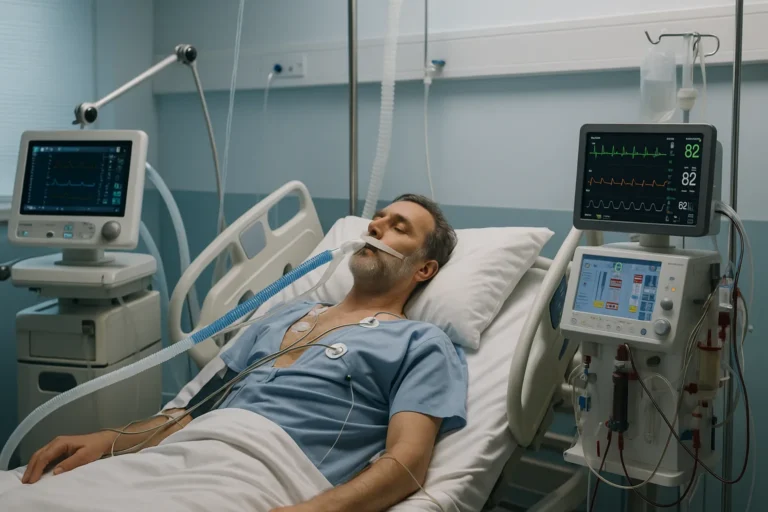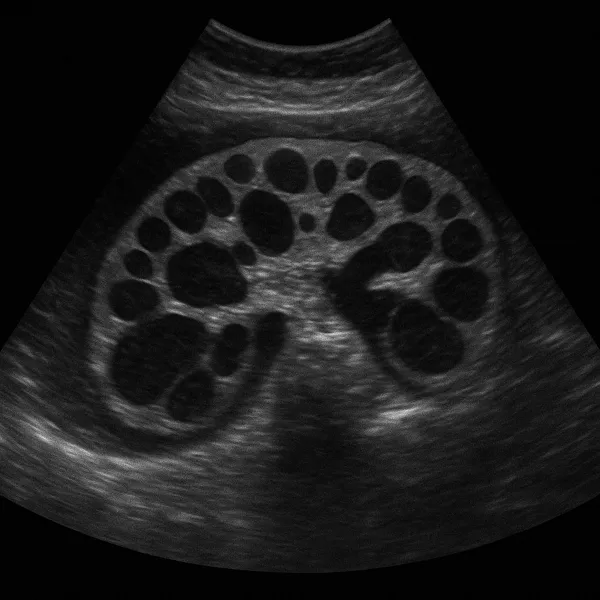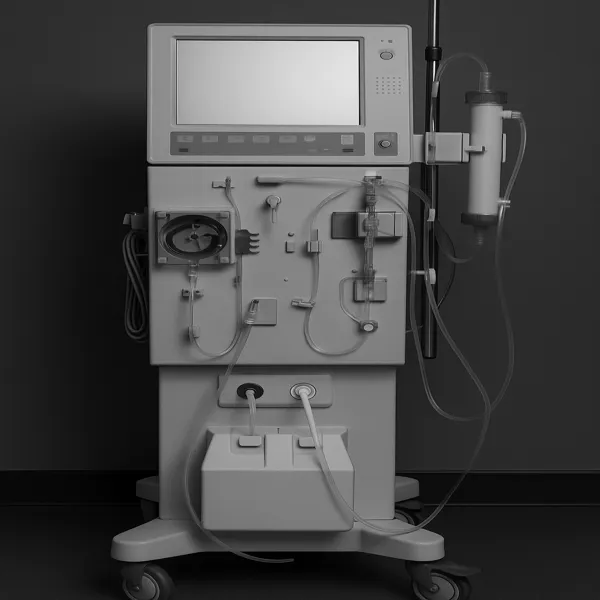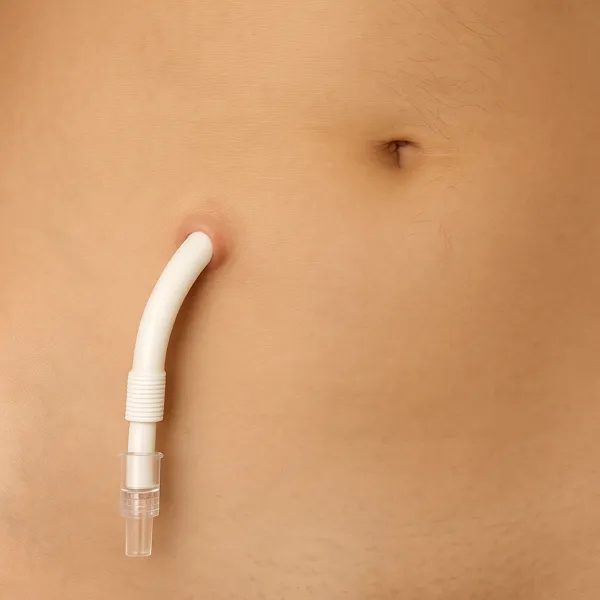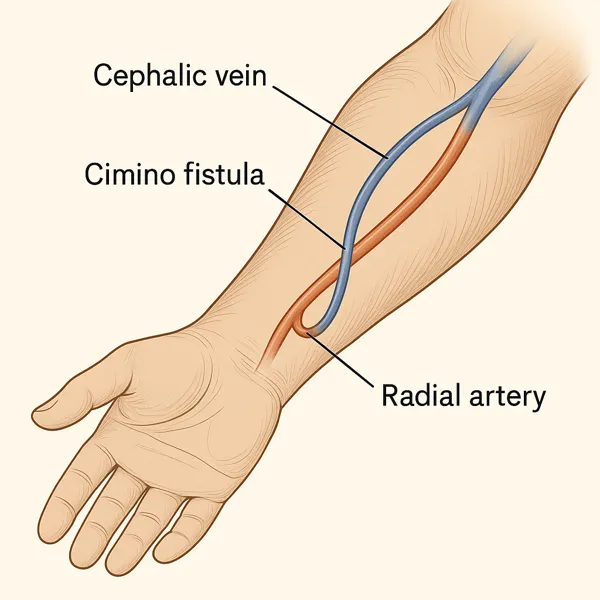Blood Pressure vs Chronic Kidney Disease: Effective Control May Need More Than 1 or 2 Medications.
Your Pressure, Your Power
Table of Contents
When I was first diagnosed with chronic kidney disease (CKD), I expected conversations about creatinine, filtration rates, and maybe even dialysis someday. But the conversation started elsewhere—with blood pressure.
At first, I didn’t see the connection. Blood pressure? Sure, I’d seen a few higher-than-normal readings at the doctor’s office, but I didn’t have headaches or feel faint. It never seemed urgent. But my care team made it clear: blood pressure isn’t just a companion to kidney disease—it’s a driver. And it’s one of the few tools we can actually control.
That changed everything.
The Kidney–Pressure Loop
What I didn’t know then—and what most people aren’t told early enough—is that the kidneys and the cardiovascular system are intimately linked. Your kidneys don’t just filter blood; they help regulate volume and pressure through a finely tuned balance of hormones, sodium excretion, and fluid retention.
When blood pressure runs high over time, it exerts relentless force on the small, delicate vessels inside the kidneys. These vessels—the glomeruli—are your body’s natural filtration system. Chronic pressure damages their walls, scars their structure, and gradually reduces your ability to clear toxins from the blood.
Even worse, damaged kidneys respond by holding onto more fluid and activating hormones that raise blood pressure even further. It’s a loop—and unless interrupted, that loop becomes a slow spiral.
Setting the Right Target
I used to think that as long as my numbers were “not dangerously high,” I was doing okay. 140 over 90 didn’t sound terrifying. But for people with CKD, especially those with protein in their urine, those numbers are already doing damage.
Current guidelines from both KDIGO and the American Heart Association suggest a target of less than 130/80 mmHg in most patients with CKD. And for good reason. Every point of pressure beyond that puts increased stress on already vulnerable kidneys.
Still, not every patient is the same. Those who are older, frailer, or on multiple medications may need a more individualized target to avoid dizziness or falls. The key is personalization. The goal is not simply lower—it’s appropriately lower.
Ask your provider: “What’s the right blood pressure for me, and why?”

Understanding Protein in the Urine
One of the earliest signs that your kidneys are under stress is protein in the urine—usually albumin. Normally, protein molecules are too large to pass through the kidney’s filter. When those filters become damaged, they start to leak.
At first, I thought this was just another number on a lab report. But I soon learned that proteinuria isn’t just a side effect—it’s a signal. It tells your doctor that the disease is active and that progression may be accelerating.
Lowering blood pressure—especially with medications like ACE inhibitors or ARBs—not only helps reduce strain on the kidneys, it directly reduces protein leakage, giving your kidneys a fighting chance to stabilize.
Even before creatinine or eGFR shift, a rising protein level can be a red flag. And addressing it early can change your trajectory. This also usually lowers target blood pressure into the 120’s/70’s or less to help reduce the forces pushing the protein through the damaged kidney filter units known as glomeruli.
Lifestyle Foundations: Salt, Weight, and Movement
I never considered myself a “salt person.” I didn’t add it to my food. But I didn’t realize how much was already there.
Sodium lurks in processed meals, canned soups, takeout favorites, and even “healthy” options like whole wheat bread and meat substitutes. For someone with CKD, it’s not just a dietary quirk—it’s a blood pressure hazard.
I started cooking at home more often, choosing fresh ingredients, and learning to flavor my food with citrus, herbs, and vinegar. It wasn’t glamorous, but it worked. I saw my legs stop swelling, and for the first time, my morning blood pressure came down before the pills kicked in.
I also began walking. Just 20–30 minutes a day, not because I was chasing weight loss, but because movement helps vessels relax. Over time, I noticed I was sleeping better and feeling less anxious—and that, too, helped my pressure respond.
These weren’t magic bullets. But they became the foundation—the soil in which the medical treatment could actually take root.
Pill Burden Isn’t Failure—It’s a Strategy
When my nephrologist added a third blood pressure medication to my list, I panicked. I was doing everything right—eating low-sodium, exercising, showing up to appointments. Why did it feel like I was losing ground?
That’s when she told me something I’ll never forget:
“This isn’t a sign of failure. It’s a reflection of your body’s complexity—and our plan to meet it.”
CKD doesn’t just raise blood pressure through one pathway. It alters hormone levels, changes how the body handles sodium and fluid, and affects the heart’s rhythm. No single pill can fix all of that.
Adding medications isn’t giving up. It’s tailoring. It’s recognizing that multiple low doses often produce better control with fewer side effects than maxing out one agent.
And yes, it’s a burden. Carrying a list of five or six meds can feel demoralizing. But when I understood what each was doing, that burden became purpose.
The Medication Toolbox
Your treatment plan may include:
- ACE inhibitors or ARBs, which reduce proteinuria and protect kidney tissue
- Calcium channel blockers, which relax blood vessels and lower resistance
- Diuretics, especially if fluid retention is an issue
- Beta blockers, to help with heart rate and anxiety triggers
- Newer agents, like mineralocorticoid receptor blockers, in specific cases
The combination is designed to target different mechanisms, not to overwhelm you. And you always have a voice—side effects can be managed, doses can be adjusted, and priorities can shift with your goals.
Your medication list isn’t a verdict. It’s a toolkit. And you’re allowed to ask how every tool fits into the bigger repair.
When Pressure Is Still Too High
There were weeks when my pressure didn’t budge, despite everything. My doctor called it resistant hypertension—when blood pressure remains elevated despite three or more medications.
It wasn’t my fault.
Sometimes it’s hidden dietary salt. Sometimes it’s stress. Sometimes it’s hormone-driven, like elevated aldosterone. Sometimes it’s just the legacy of blood vessels that have been under pressure for too long.
The solution isn’t to give up—it’s to investigate. In my case, we adjusted my med timing, added a light evening walk, and started home monitoring. And gradually, the numbers started shifting.
Becoming Your Own Tracker
Getting a home blood pressure cuff was a turning point. I took readings in the morning before meds and again before bed. I wrote down how I felt—dizzy, tired, anxious—and what I ate.
By my next appointment, I brought a picture of what was really happening, not just what the clinic caught. That changed our conversation from “how are you doing?” to “here’s what we’re learning.”
Some clinics offer remote monitoring programs that let you send your readings securely to your team. It’s not surveillance—it’s a lifeline.
You’re not just a patient. You’re a partner.
Blood Pressure as a Form of Power
Managing blood pressure in CKD isn’t glamorous. It’s slow, daily, often invisible work. It’s label reading, water tracking, pill refills, and quiet choices when no one is watching.
But it’s also power.
Because for all the things we can’t control—like aging, genetics, or past injury—this is one area where effort matters. This is one place where choices echo. Where numbers shift in response to persistence.
So don’t measure success by how many medications you’re on. Measure it by how much you understand. How engaged you are. How willing you are to keep showing up.
Your pressure is your power. Use it wisely.
External Links (for continued reader support)
- KDIGO Guidelines on Blood Pressure in CKD (2021)
- American Heart Association – High Blood Pressure Resources
- National Kidney Foundation – High Blood Pressure & Your Kidneys
- Remote Blood Pressure Monitoring – NIH Summary
- Understanding ACE Inhibitors and ARBs – Mayo Clinic
References
- KDIGO 2021 Clinical Practice Guideline for the Management of Blood Pressure in CKD. Kidney Int Suppl. 2021;11(3):S1–S128.
- Whelton PK, et al. ACC/AHA 2017 Guideline for High Blood Pressure. Hypertension. 2018;71:e13–e115.
- National Kidney Foundation: High Blood Pressure & Your Kidneys
- Bakris GL, et al. Combination therapy in CKD-related hypertension. Kidney Int. 2020;97(3):499–511.

